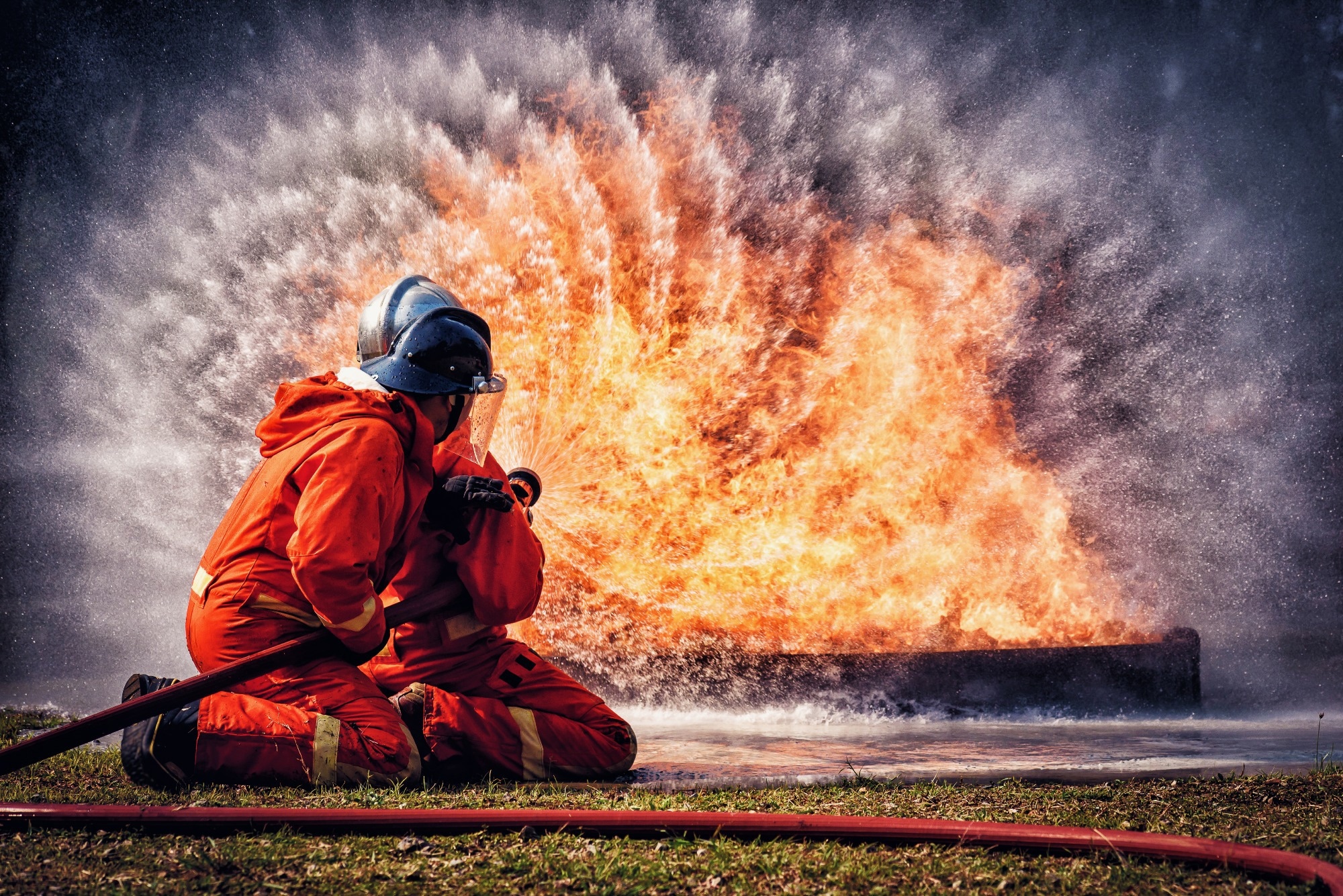In a paper published in the journal Fire, researchers proposed a fire safety detection algorithm, CAGSA (CARAFE (Content-Aware ReAssembly of Features), Ghost, and SA (Self-Attention) )-YOLO(You Only Look Once), to create a fire safety dataset. The algorithm combines common fire protection tools to enhance fire detection and prevent fire incidents. In the enhanced algorithm, the CARAFE (Content-Aware ReAssembly of Features) replaces YOLOv5 upsampling, updated scale detection for larger objects, C3Ghost for lightweight design, and lighter SA mechanism for visual information processing.
 Study: CAGSA-YOLO: A Deep Learning Algorithm for Fire Detection and Prevention. Image credit: palidachan /Shutterstock
Study: CAGSA-YOLO: A Deep Learning Algorithm for Fire Detection and Prevention. Image credit: palidachan /Shutterstock
Background
Over the past decade, increased fire incidents due to accelerated economic growth have posed major security threats to the economy at the national level and personal safety. Traditional fire detection systems primarily rely on sensor-based methods like temperature, smoke, and light sensing detectors. However, lately, advancements in deep learning and image detection have shown promising results in fire detection.
Insights into four fire indices were gained from data collected from the China Fire Yearbook from 2016 to 2018, fire data reports from the Ministry of Public Security in 2019, and additional data from 2020 to 2022. The 2022 report emphasizes the increased vulnerability to residential buildings, skyscrapers, industrial facilities, and small businesses, particularly in enclosed spaces.
Indoor fires are associated with increased fatalities and more significant financial damages when compared to wildfires in natural forests. To mitigate indoor fires, considerable efforts have been dedicated to developing fire detection systems utilizing an array of sensor-based approaches. Temperature, smoke, and light detectors are used for sensing and are universally accepted as the leading and extensively used fire detection technologies. By analyzing clarity, spectral analysis, heat levels, and airborne particles within the observed zone, these detectors swiftly identify fire incidents.
In the last few years, deep learning-based image detection methods have witnessed significant advancements. Many have contributed to developing dynamic learning algorithms, advanced flame texture feature extraction, enhanced object detection precision, and introduced innovative mechanisms like 3D attention and BiFPN (Feature Pyramid Network) structures to enhance smoke and flame detection algorithms. These advancements aim to address fire safety challenges and enhance detection systems' efficiency and accuracy.
The present study makes several key contributions:
- Integration of standard fire safety equipment into flame and smoke datasets, enhancing the performance and accuracy of fire detection and prevention systems.
- Addition of a new detection layer for small indoor fire instances and fire tools, enabling four-scale detection with anchor boxes.
- Improvements to the YOLOv5 model, incorporating CARAFE, Ghost, and SAmodules to reduce Parameters and GFLOPs (Giga Floating-point Operations Per Second) while maintaining accuracy in the lightweight CAGSA-YOLO model.
Proposed Methodology
Deep learning methods, particularly convolutional neural networks (CNNs) and the YOLO series, known for their one-stage object detection approach, have gained significant traction in fire detection research due to their speed advantage. YOLOv5, introduced in 2020, comes in four versions, with YOLOv5s being a focus of our investigation for lightweight design in mobile applications. The framework of YOLOv5 employs an adaptive scaling mechanism for image resizing, a new Focus structure in the Backbone, and an FPN + PAN (Path Aggregation Network) structure in the Neck to improve feature fusion and localization capabilities. The output end of YOLOv5 utilizes three loss functions for precise detection. By employing the YOLOv5 one-stage target detection algorithm, this research aims to identify fire safety targets using deep learning techniques.
The proposed CAGSA-YOLO model builds upon YOLOv5s, modifying the three-scale architecture with CARAFE upsampling and Ghost lightweight design, resulting in a four-scale improvement. Additionally, the model integrates an SA mechanism to enhance the overall network performance.
The study explores various upsampling methods in deep learning networks, identifying their limitations and proposing a lightweight CARAFE sampling model for improved feature map reassembly. An additional small object detection layer is introduced to enhance the ability of the model to detect smaller objects.
To optimize the model for low-power devices, the GhostNet network model is utilized, and the attention mechanism is introduced for improved target detection and feature suppression. The combination of CBAM (Convolutional Block Attention Module) and GCNET (Global Context Network) modes substantially improves performance.
Findings and Conclusion
The dataset is crucial for deep learning object detection, influencing model robustness and generalization. To address limited fire and smoke datasets, this study enriches them with fire prevention tools. With approximately 500 high-definition images and various techniques, the dataset covers eight categories: fire, smoke, fire hydrant, fire extinguisher box, fire extinguisher, smoke alarm, manual fire alarm call point, and warning lights. Thus, ensuring a wide distribution and generalization capability for the model.
Evaluation metrics for object detection algorithms included precision (P), recall (R), and average precision (mAP). The study conducted various experiments, improving the YOLOv5s model, such as replacing upsampling with the CARAFE operator, introducing a new scale detection layer, implementing the Ghost lightweight design, and incorporating the SA module. The final CAGSA-YOLO model achieved an mAP of 85.1%, outperforming the original YOLOv5s model with a smaller model size and faster inference speed.
This paper presents a new dataset for fire safety that combines flames, smoke, and fire safety tools, enhancing fire detection and prevention systems. Improvements to the YOLOv5 model include a new scale detection layer, CARAFE upsampling, C3Ghost lightweight design, and the SA mechanism. The experiments show the superiority of the improved CAGSA-YOLO model for fire safety, aiding firefighters and improving fire prevention management efficiency.
The improved model efficiently identifies indoor fire equipment, enhancing fire safety systems and aiding firefighters in rapid response and prevention. Its relevance for urban safety and building protection makes it valuable for fire prevention management, improving efficiency and quality.
Journal reference:
- Wang, X., Cai, L., Zhou, S., Jin, Y., Tang, L., & Zhao, Y. (2023). Fire Safety Detection Based on CAGSA-YOLO Network. Fire, 6:8, 297. DOI: 10.3390/fire6080297, https://www.mdpi.com/2571-6255/6/8/297